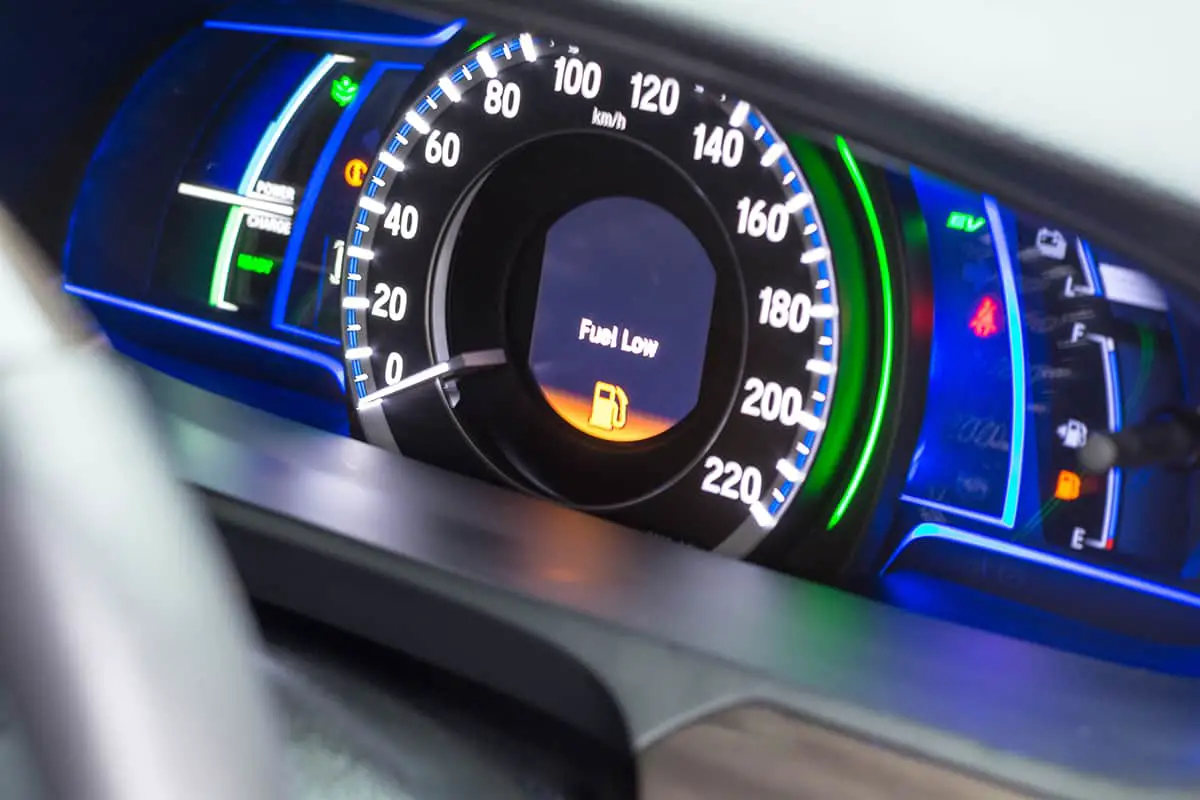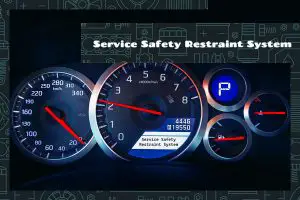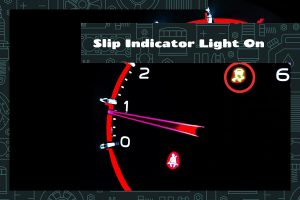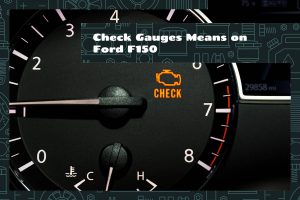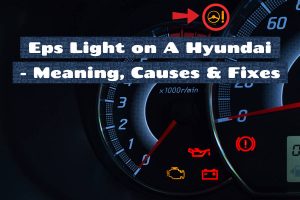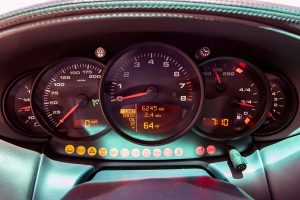When you’re behind the wheel, your car’s dashboard is like a trusted co-pilot, giving you important information about the health and status of your vehicle. The gas light serves as a warning that your fuel level is running low, and if you don’t refuel soon, you’ll find yourself stranded on the side of the road. So, how many more miles can you drive when these dreaded lights flash on?
The gas light usually turns on when your gas tank has around 10 to 15% of gas left. Depending on the make and model of your car, you may be able to drive an additional 10 to 30 miles, but it depends on the gas tank capacity and average mileage per gallon.
In this guide, we’re going to cover the basics of the gas light, how many estimated miles a car can drive when the gas light turns on, and what can happen to your car when you drive on low fuel.
What Is the Gas Light?
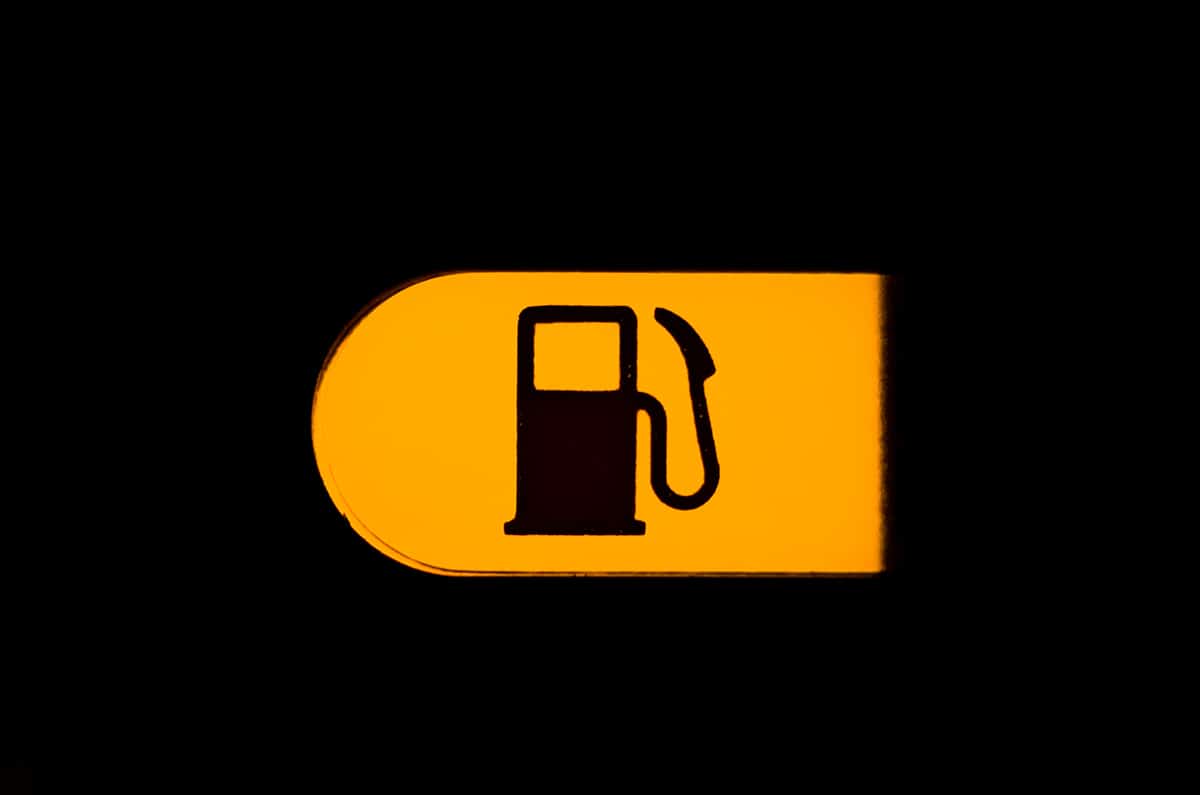
The gas light is a warning indicator found on the dashboard of most vehicles. Its purpose is to alert the driver that the fuel level in the tank is running low and that it’s time to refuel. The gas light typically comes on when the fuel level falls below a certain level, typically around 10% to 15% of its full tank capacity.
It’s important to note that the gas light is not the same as the fuel gauge, which indicates the amount of fuel in the tank on a continuous scale. The gas light serves as a more immediate warning, telling you to refuel as soon as possible. It’s also important to understand that the gas light may come on at different times for different vehicles, depending on the size of the fuel tank and the fuel efficiency of the engine.
Can You Drive When the Gas Light Flashes On?
Driving with the gas light turned on is possible, but it’s not recommended. The gas light is a warning that your fuel level is running low, and driving after the light has come on can be risky. Running out of fuel can cause damage to your engine and leave you stranded on the side of the road.
It’s important to refill your tank as soon as possible once the gas light turns on. The exact amount of time you have to refuel will depend on the size of your fuel tank and the fuel efficiency of your engine. However, most drivers can expect to have a range of around 10 to 30 miles once the gas light comes on. Some newer vehicles with better mileage can cover distances of 50 miles when this warning light flashes on.
It’s always a good idea to err on the side of caution and refuel as soon as possible once the gas light turns on. Driving with a low fuel level can also decrease your fuel efficiency and increase your carbon footprint, so it’s not just about avoiding breakdowns but also being environmentally conscious.
Estimated Driving Distance When Gas Light Flashes by Car
The following chart will provide estimates of different cars for when the gas light turns on and how much farther it can travel.
| Car Model | Gas Tank | Est. Gas Light Range (10-15%) | Est. Combined Mileage | Est. Remaining Driving Distance |
| Chevrolet Trailblazer | 13.2 gallons | 1.32 to 1.98 gallons | 30 MPG | 39.6 to 59.4 miles |
| Chrysler Pacifica | 19.0 gallons | 1.90 to 2.85 gallons | 22 MPG | 41.8 to 62.7 miles |
| Ford F-150 | 23.0 gallons | 2.30 to 3.45 gallons | 20 MPG | 46 to 69 miles |
| Honda Accord | 14.8 gallons | 1.48 to 2.22 gallons | 32 MPG | 47.36 to 71.04 miles |
| Honda Civic | 12.4 gallons | 1.24 to 1.86 gallons | 34 MPG | 42.16 to 63.24 miles |
| Honda Odyssey | 19.5 gallons | 1.95 to 2.93 gallons | 22 MPG | 42.9 to 64.46 miles |
| Hyundai Accent | 11.9 gallons | 1.19 to 1.79 gallons | 36 MPG | 42.84 to 64.44 miles |
| Hyundai Elantra | 12.4 gallons | 1.24 to 1.86 gallons | 35 MPG | 43.4 to 65.1 miles |
| Hyundai Santa Cruz | 17.7 gallons | 1.77 to 2.66 gallons | 23 MPG | 40.71 to 61.18 miles |
| Jeep Grand Cherokee | 24.6 gallons | 2.46 to 3.69 gallons | 21 MPG | 51.66 to 77.49 miles |
| Kia Carnival | 19.0 gallons | 1.90 to 2.85 gallons | 22 MPG | 41.8 to 62.7 miles |
| Kia Rio | 11.9 gallons | 1.19 to 1.79 gallons | 36 MPG | 42.84 to 64.44 miles |
| Mazda 3 | 13.2 gallons | 1.32 to 1.98 gallons | 30 MPG | 39.6 to 59.4 miles |
| Mazda CX-30 | 12.7 gallons | 1.27 to 1.91 gallons | 26 MPG | 33.02 to 49.66 miles |
| Mazda CX-5 | 15.3 gallons | 1.53 to 2.30 gallons | 26 MPG | 39.78 to 59.8 miles |
| Mitsubishi Outlander | 14.5 gallons | 1.45 to 2.18 gallons | 26 MPG | 37.7 to 56.68 miles |
| Subaru Forester | 16.6 gallons | 1.66 to 2.49 gallons | 29 MPG | 48.14 to 72.21 miles |
| Subaru Outback | 18.5 gallons | 1.85 to 2.78 gallons | 29 MPG | 53.65 to 80.62 miles |
| Volkswagen Jetta | 13.2 gallons | 1.32 to 1.98 gallons | 33 MPG | 43.56 to 65.34 miles |
| Volkswagen Taos | 13.2 gallons | 1.32 to 1.98 gallons | 31 MPG | 40.92 to 61.38 miles |
What Can Happen When You Drive on Low Fuel?
Many issues can arise if you drive on critically low fuel. Here are some of the most frequent results:
1. Engine damage
When the tank’s fuel level drops too low, air can be drawn into the fuel pump and not dispensed to the engine. Because of this, the fuel pump may overheat and stop working. If the fuel pump stops working, the engine won’t get the gas it needs to keep running, and that can lead to expensive repairs.
A low fuel level can also expose the fuel pick-up tube, which can lead to leaks in the fuel line. Long-term engine damage can be the result of fuel leaking from the tank or becoming contaminated.
2. Strain on the fuel pump
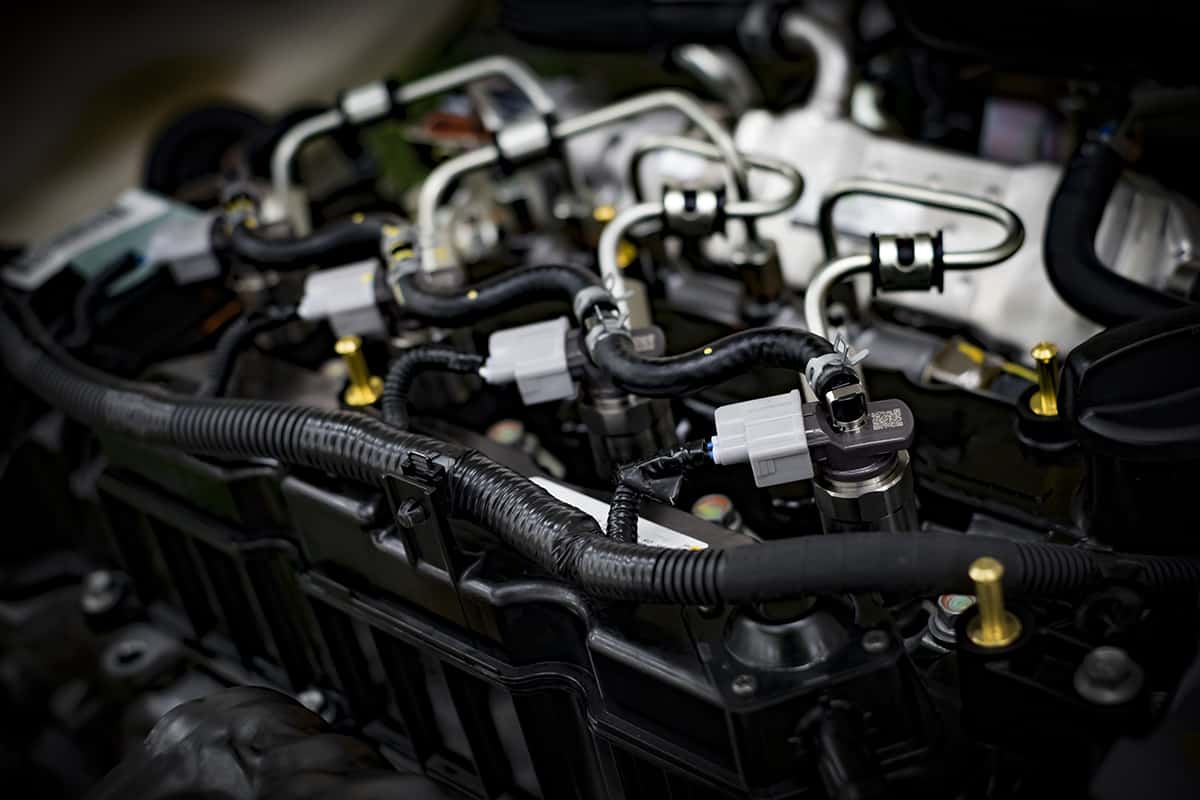
When the fuel level in the tank gets too low, the fuel pump, which is responsible for delivering fuel to the engine, can suck in the air. This can cause the fuel pump to overheat and potentially fail. When the fuel pump fails, the engine will no longer receive the fuel it needs to run, which can cause serious damage.
Additionally, when the fuel level gets too low, the fuel pick-up tube can become uncovered, potentially causing damage to the fuel line. This can cause fuel to leak or become contaminated, which can cause damage to the engine over time. In short, driving with low fuel can cause the fuel system to malfunction, potentially leading to engine damage.
3. Fuel line damage
When the tank’s fuel level is low, the fuel pick-up tube can become exposed, which can lead to problems with the fuel line. Leaking or contaminated fuel can clog the fuel filter and damage other parts of the fuel system, so it’s important to avoid this.
Fuel line ruptures and leaks are also possible outcomes of the fuel pump having to work harder to draw fuel from the tank’s lowest point. In a nutshell, if you’re low on gas and keep driving, you risk damaging the fuel line because the fuel pick-up tube will become exposed and the fuel pump will have to work harder than necessary.
4. Reduced fuel efficiency
If the tank is almost empty, the fuel pump will have to work harder to draw fuel from the bottom of the tank, which could increase fuel consumption. Overheating of the fuel pump, which can occur when driving on low fuel, can also reduce the pump’s efficiency.
The engine may have to work harder to compensate for a less efficient fuel pump, which further decreases fuel efficiency. In a nutshell, driving on low fuel can stress the fuel pump, reducing its efficiency and potentially affecting your fuel economy.
